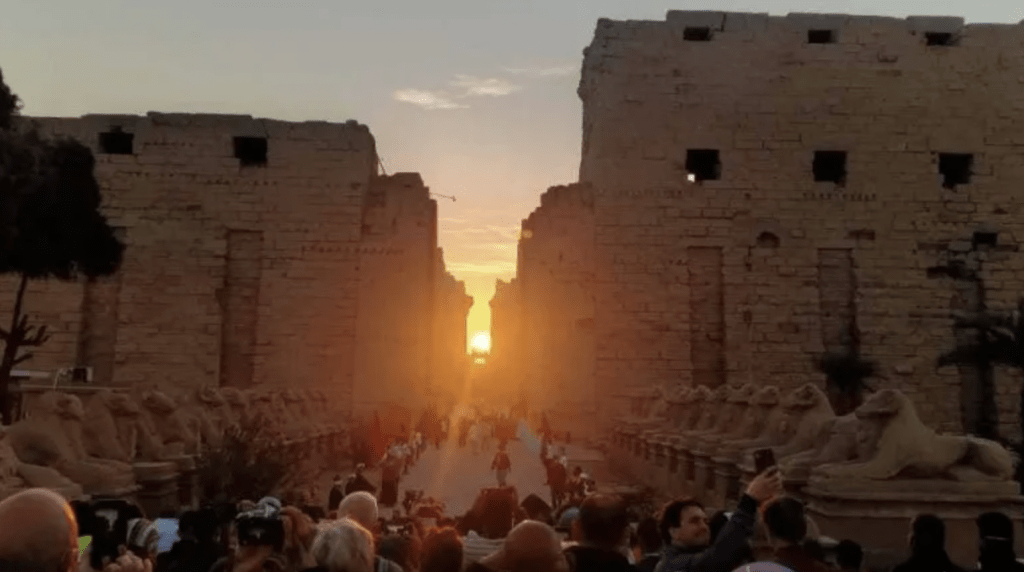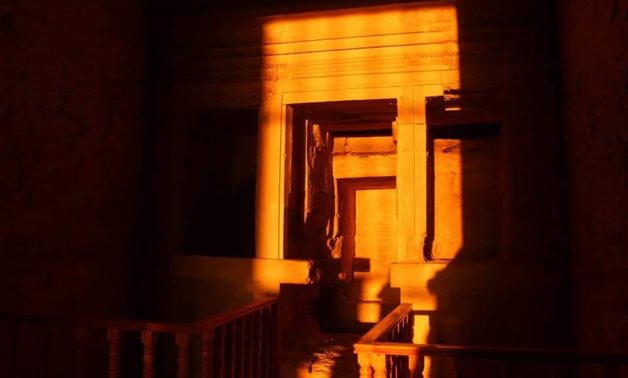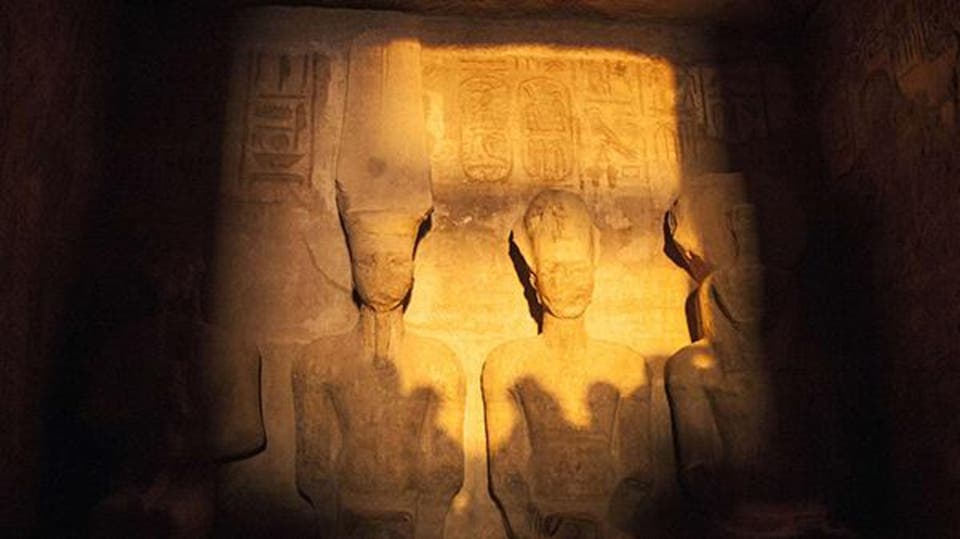Hidden away in long and elongated temple complexes past rows of columns and courtyards or deep down the tunnels of grand and intricately decorated burial chambers are statues of ancient Egyptian gods and pharaohs. Concealed from the sun and the outside world, the seated or standing statues stoically maintain their gaze forwards, straight toward a small glimpse of the outside world in the distance. Bar the occasional flash from a tourist’s camera prompting an attendant guard’s reprimanding, the statues never receive much light. However, as if by divine intervention, for several minutes at the exact time each year, sunlight pours deep down into the tomb or through a long temple complex to warm the faces of the statues coddled away. The perfect alignment of the sun-starved statues, long passageway, and distant sun in a straight unobstructed path, presents the sun as somehow uniquely being interested in just these gods and pharaohs carved out of stone. As if shining a celestial torch down the long funerary or temple complexes, there is something about the event that arouses a sense of wonder. Solar alignments like these can be found across Egypt and were deliberately created in the design of the complexes. While thousands of years ago these biannual events would be part of rituals and religious festivals, nowadays, they attract a different crowd of tourists and Egyptologists.
The most famous of Egypt’s solar alignments illuminating hidden parts of ancient temples and tombs can be found in the Great Temple of Ramses II in Abu Simbel, beside Lake Nasser. Today, on October 22, the sun is set to pierce 200 meters deep inside the temple complex at Abu Simbel. For less than 20 minutes, the sun will gently light the statue of Pharaoh Ramses II sitting alongside the gods Ra-Hor and Amun, but tellingly leave the face of Ptah unlit, perhaps due to his reputation as the god of darkness. The solar alignment in Abu Simbel, however, has no relation to grand celestial changes like some other solar alignments in Egypt, but instead, it is believed by some archaeologists that the biannual solar alignment marks both Ramses II’s birthday and coronation. While the temple was moved in the 1960s, its angle and direction have been kept exactly the same to preserve the biannual solar alignment that it was designed around. The many thousands of years old tradition of people gathering to witness the event is still set to attract hundreds of visitors eager to see the unique natural phenomenon with their own eyes. The Egyptian Ministry of Tourism in recent years has decided to promote this biannual event with a light show, dance performances, and the release of sky lanterns, and the event will even be televised this year

Every year on December 21, Egypt also hosts a solar alignment along the main axis in Karnak Temple, which sees the sun rise and shine through the long and elaborately decorated temple. In the run-up to the event every year, Egyptians and foreigners alike gather in their hundreds before the sun rises at the sanctuary of Amun-Ra, the god of the sun and light, to await the rising sun piercing through the complex. However, the sun appearing on December 21 in such a position to precisely shine its rays through the center of the expansive temple complex is by no accident. Indicative of both the ancient Egyptian’s deep knowledge of the sun and of the importance of the sun to ancient Egyptian religion and society, December 21 marks the northern hemisphere’s winter solstice. Winter solstice marks the day when the earth’s northern pole is tilted the furthest away from the sun, when nights in the northern hemisphere are at their longest, and the start of winter, and incredibly was understood and celebrated by many ancient civilizations.

There are several other solar alignments in incredible places across Egypt that attract eager visitors from across the world. While some alignments like at the Qasr Qarun Temple in Fayoum, which illuminates the crocodile god Sobek, similarly fall upon the winter solstice on December 21, others do not fall on a notable day and may have simply been the result of coincidence. Hatshepsut’s Temple in Luxor along with Dandara Temple in Qena and the Temple of Hibis in the New Valley all also have biannual solar alignments that impressively pierce through the structures and illuminate otherwise permanently shaded sanctums burrowed in the temples. Outside of the world of ancient Egypt, the fourth-century Deir Al-Malak Christian monastery near the city of Minya recently found that the sun aligned perfectly to illuminate the altar through a hole in the ceiling.

In the modern world, solar alignments may not have the same religious or ritualistic purpose as they once did, but they still appeal to something very human in us. As a testament to this, hundreds have gathered in Abu Simbel today to carry on a tradition that dates back thousands of years and witness the sun piercing through the temple.



